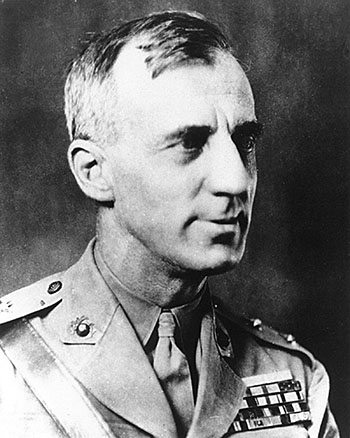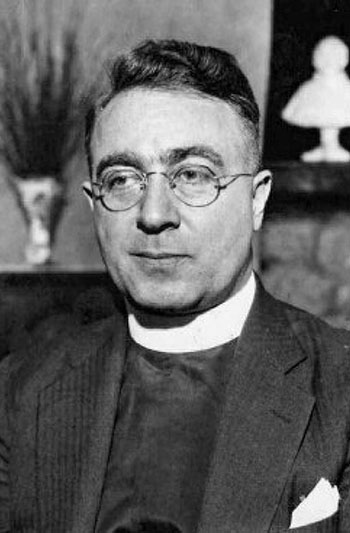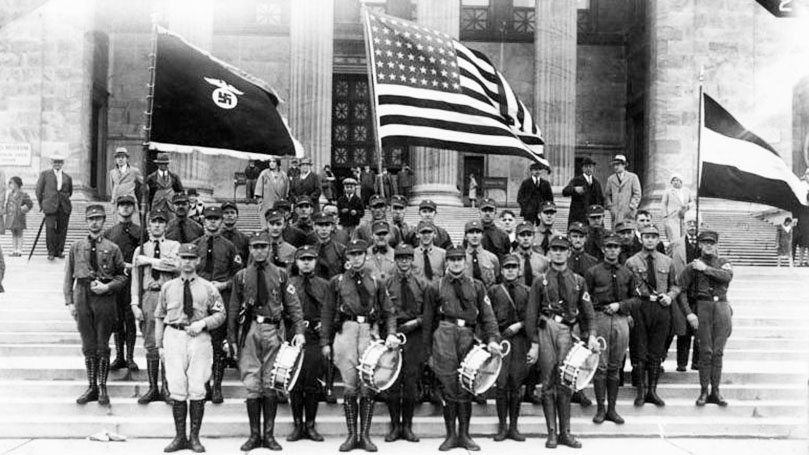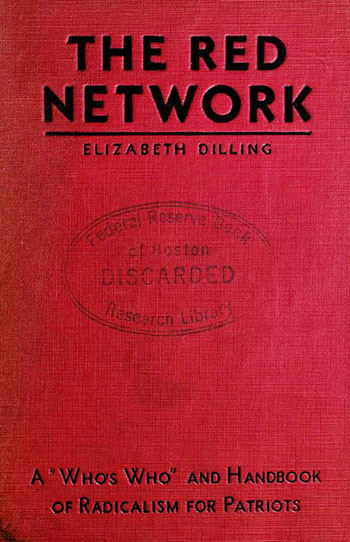
On January 6, 2021, people throughout the world watched as a mob incited directly by the outgoing president, Donald Trump, stormed the Capitol. This was a classic attempted political coup to keep in power a government rejected in an election. Death and destruction followed as the mob chanted “Hang Mike Pence” (Trump’s outgoing vice president who refused to decertify Biden’s election) and threatened the lives of House speaker Nancy Pelosi and other Democratic leaders of Congress.
Since then, rioters have been brought to trial, including members of the “Proud Boys,” a small street-fighting, publicity-seeking group resembling Hitler’s Storm Troopers (Sturm Abteilung, or SA), and the Oath Keepers, a group made up of former and current military and police officers, which resembles Hitler’s Elite Guard (Schutzstaffel, or SS).
But those who incited the failed coup, from Trump on down, have not been arrested, and the Republican Party leadership has sought to deny that the insurrection happened.
If the Republicans regain control of Congress in the coming elections, using the inflation crisis as their battering ram, we can expect them to kill the present federal investigations. Also, in the worst-case scenario, we might see them act the way conservative governments did in Italy in the early 1920s and in Germany in the early 1930s—enable Mussolini and his fascist party (1922) and Hitler and his Nazi party (1933) take power. In this case, though, the fascist danger comes from the Trump fascist forces within the Republican Party itself. (I will use the term “Trump fascism” the way Marxists and Communists have long referred to Nazism as “Hitler fascism” to distinguish it from other fascist movements and parties.)
The first fascist coup—The Smedley Butler conspiracy and its investigation
In 1934 former Marine Corps General Smedley Butler was a very well-known figure. Having served in the Marines since the Spanish American War (1898), he had twice won the Congressional Medal of Honor serving as a foot soldier for U.S. gunboat diplomacy in Latin America and Asia.[i]
Butler also defended the Bonus Marchers, the World War I soldiers who in 1932 marched on Washington demanding the bonus promised to them for their service. The march was brutally suppressed by the U.S. Army under the command of General Douglas MacArthur.
Butler was approached in July 1934 by Gerald C. MacGuire, a Wall Street bond salesman, and Bill Doyle, the department commander of the American Legion in Massachusetts, to recruit him to lead a coup against President Roosevelt, promising him $30 million in financial backing and the support of the press and radio.
 But they had picked the wrong man. Butler pretended to work with the plotters to gain more information. He informed leading New Dealers in Congress, especially Congressmen John McCormack and Samuel Dickstein who had formed a committee to investigate Nazi and other “Un-American” propaganda in the U.S.
But they had picked the wrong man. Butler pretended to work with the plotters to gain more information. He informed leading New Dealers in Congress, especially Congressmen John McCormack and Samuel Dickstein who had formed a committee to investigate Nazi and other “Un-American” propaganda in the U.S.
In November he testified before the Committee and laid out evidence of a far-reaching conspiracy involving the American Liberty League, a bipartisan organization of corporate leaders and prominent politicians which had been created to fight against the New Deal government’s pro-labor and social welfare policies. He implicated leaders of Standard Oil, Dupont, General Motors, and U.S. Steel in a plot to have him lead an army of veterans in a new march on Washington which would lead to widespread violence and the establishment of a military government led by General MacArthur. Most of the press buried the original story, although a few pro–New Deal newspapers did cover it sympathetically. But most of the press printed denials and attacked Butler.
In February 1935, the McCormack-Dickstein Committee released its report, stating,
In the last few weeks of the committee’s official life it received evidence showing that certain persons had tried to establish a fascist government in this country. . . . There is no question that these attempts were discussed, were planned, and might have been placed in execution when and if the financial backers deemed it expedient.
However, the Roosevelt administration, about to launch its most important labor and social welfare programs, Social Security, the National Labor Relations Act, and the Works Progress Administration, let the issue drop. No one would be prosecuted, although the conspiracy itself to bring down a president through rioting in Washington had been nipped in the bud and the New Deal government itself strengthened [ii]
The “Radio Priest” and the fascist “Christian Front” trial, 1940
Those who had been behind the incipient 1934 coup against FDR, the Liberty League and its big business backers, went down to a disastrous defeat in the 1934 congressional and 1936 presidential elections. While Roosevelt and the Democratic Party won an overwhelming victory in 1936, a “third party,” calling itself the National Union Party, ran on a program of economic nationalism.
 Its most important backer, Father Charles Coughlin, a Catholic priest based in Royal Oak, Michigan, had attracted a huge radio audience with his weekly addresses. Coughlin had initially supported the New Deal, but in 1936, influenced directly by Hitler fascism, he denounced the New Deal government as an instrument of “international communism” and “international Jewish bankers.” A strong supporter of Francisco Franco and the Spanish fascists in the Spanish Civil War, Coughlin increased his rabid anti-Communism and anti-Semitism on the air, which led to campaigns to boycott his program.
Its most important backer, Father Charles Coughlin, a Catholic priest based in Royal Oak, Michigan, had attracted a huge radio audience with his weekly addresses. Coughlin had initially supported the New Deal, but in 1936, influenced directly by Hitler fascism, he denounced the New Deal government as an instrument of “international communism” and “international Jewish bankers.” A strong supporter of Francisco Franco and the Spanish fascists in the Spanish Civil War, Coughlin increased his rabid anti-Communism and anti-Semitism on the air, which led to campaigns to boycott his program.
In November 1938, when the Hitler regime launched a national campaign of violence and terror against Germany’s remaining Jewish community (the burning of synagogues, the beatings, arrests, murder, imprisonment of Jewish people), which the Nazis themselves called Kristallnacht, “the night of the broken glass,” Coughlin made a speech on the radio justifying the atrocities and blaming “the Jews” for supposedly bringing it on themselves. This led to his removal from commercial radio.
Coughlin and his supporters then organized a “Christian Front” whose major center was New York City and whose membership consisted mostly of Roman Catholic Irish young men, even though Irish immigrants themselves had been the victims of violent attacks and anti-immigrant campaigns in the 19th century.
The Christian Front demonstrated against Jewish stores and shops and provoked fights in subways and on the street with people they thought were Jewish, beating and in some instances stabbing people. On orders from New York mayor Fiorello La Guardia, the NYPD, which had some Christian Front sympathizers, infiltrated the organization and arrested some of these hoodlums, who were later tried and convicted for their crimes.
As the events leading to World War II accelerated, the Christian Front increased its activities, participating in a famous Madison Square Garden rally with the Nazi German American Bund. A more extreme faction, calling itself “the Christian Mobilizers,” began to hold openly pro-Nazi meetings and planned to store arms and function as organized storm troopers. In 1940, 17 members of the Christian Front were arrested and brought to trial by the Roosevelt administration for sedition in the form of pro-Nazi activities, including the storing of arms for insurrection.
Coughlin initially supported the Christian Front, claiming them to be “pro American, anti-Communist, and anti-Nazi.” The trial itself became something of a fiasco, since the defendants, low-level street hoodlums, were characterized by the press as crackpots. No verdicts were issued, and the Justice Department in 1941 did not pursue the case. Coughlin himself began to distance himself from the Christian Front as he became more isolated.

After the U.S. entered WWII, the Catholic Church officially “silenced” Coughlin, who ended his sermons on or involvement in politics, although he continued to serve in his church, the Shrine of the Little Flower, in Royal Oak, Michigan.
Ironically, Coughlin, whose radio broadcasts filled with anti-Semitic demagoguery reached an audience of millions in the 1930s, broke his “silence” on politics in 1964 to endorse right-wing Republican presidential nominee Barry Goldwater, whose father was Jewish. But Coughlin had not really changed, although the defeat of Hitler and the fascist Axis had taken the sort of ideas that he advanced outside mainstream media.
When I was a graduate student at the University of Michigan more than half a century ago, a fellow graduate student who had done an undergraduate thesis on Coughlin and interviewed him told me this: when he asked Coughlin why he thought the Catholic Church had silenced him in 1942, Coughlin said “Pope Pius XI had Jewish blood in him.” So-called white Christian nationalism today continues to recycle versions of Coughlin’s Christian Front as an expression of neo-fascism of today.
The 1944 Smith Act sedition trial
Franklin Roosevelt had worried about Nazi influence and called upon J. Edgar Hoover to investigate Nazi activities as early as 1935. Hoover, though, was more interested in focusing his attention on the CPUSA and the Soviet Union, as he had from the post–WWI Red Scare to his death in 1972. When WWII began, Roosevelt ordered the Justice Department to move against fascist supporters.
 The Smith Act of 1940 made it a crime to “teach or advocate the violent overthrow of the government.” Although the act was sponsored by Howard Smith of Virginia, a leading anti–New Deal Democrat and segregationist who sought to use it against the Communists and the left, WWII made that impossible. In 1944 the Justice Department brought 30 extreme-right defendants, well-known before and during WWII, to trial under the Smith Act. The best-known of these defendants was Joe McWilliams, leader of the “Christian Mobilizers,” a faction of Coughlin’s Christian Front that had engaged in the beatings and stabbings that led to the 1940 trial. Other defendants included well-known Nazi and fascist agitators like the writer Elizabeth Dilling, whose 1930s “exposé” Red Network had accused Herbert Hoover and Chinese dictator Chiang Kai-shek of being Communists, and the prominent right-wing intellectual Lawrence Dennis, author of The Coming of American Fascism (1940).[iii]
The Smith Act of 1940 made it a crime to “teach or advocate the violent overthrow of the government.” Although the act was sponsored by Howard Smith of Virginia, a leading anti–New Deal Democrat and segregationist who sought to use it against the Communists and the left, WWII made that impossible. In 1944 the Justice Department brought 30 extreme-right defendants, well-known before and during WWII, to trial under the Smith Act. The best-known of these defendants was Joe McWilliams, leader of the “Christian Mobilizers,” a faction of Coughlin’s Christian Front that had engaged in the beatings and stabbings that led to the 1940 trial. Other defendants included well-known Nazi and fascist agitators like the writer Elizabeth Dilling, whose 1930s “exposé” Red Network had accused Herbert Hoover and Chinese dictator Chiang Kai-shek of being Communists, and the prominent right-wing intellectual Lawrence Dennis, author of The Coming of American Fascism (1940).[iii]
The trial itself was a grotesque and at times comical fiasco. The “defendants” and especially their attorneys used the trial to make a mockery of the judicial process. Among the motions made by the defense was to wait until the war was over and then seek depositions from Hitler, Goebbels, and other Nazi leaders about whether the defendants were really involved in advancing the fascist war effort. Subpoenas were issued to the leaders of the CPUSA and various Jewish organizations to “ascertain” if the defendants were the victims of a “Communist Jewish plot” to frame them. Finally, Charles Lindbergh, Henry Ford, and other prominent figures in the America First movement and the Liberty League were called as defense witnesses. Eventually, a mistrial was declared after the sudden death of the judge, and the defendants were never retried. In the post-war era, the Smith Act was used to arrest, try, and imprison the leaders of the CPUSA for “conspiring to teach or advocate” the violent overthrow the government.
Were Communists wrong to support the 1940 and 1944 trials because the Smith Act would later be used against them? Definitely not. Communists understood that they were always the first targets of J. Edgar Hoover’s FBI, the House Un-American Activities Committee, and state and local Red Squads and little HUACS.
But these fascist groups, seeking to both ally themselves with and emulate Hitler fascism, were not only advocating insurrection but also preparing to use terroristic violence to advance their ends. Exposing and seeking to criminalize their activities was the right thing to do, rather than remain silent and hope that they would fade into oblivion in the aftermath of the war.
The issues today
The failed January 6 coup was unprecedented in U.S. history. The army of veterans that Smedley Butler was asked to lead in 1934 to create rioting as the basis for coup to oust FDR never got anywhere. But the rioting, death, and destruction to keep Donald Trump in power did happen. Some of the defendants in the 1944 sedition trial had direct connections with far-right “isolationist” Republican and Democratic politicians whose sympathies were with the Axis powers. However, today the Republican Party itself is in the hands of those who brought about the January 6 coup and continue to advance its goals.
They are subverting the November 8 congressional elections and future elections through voter suppression, gerrymandering, and the refusal to accept the results of elections that go against them. These are and have long been standard tactics of open terroristic dictatorships everywhere. In the 1930s and 1940s, the old fascists in the U.S. were emulating Hitler and his Nazi party. Today’s neo-fascists are emulating Trump and his Republican Party here and throughout the world.
This makes the midterm elections and the defeat of the Republican Right paramount. Also paramount is continuing the exposure of the January 6 coup and demanding that criminal charges be brought against those who brought it about, from Trump on down. And it means mobilizing people to fight against groups who were the shock troops of the January 6 failed coup. We must defeat and isolate them now before they can grow and become a greater threat to the rights of the people and democracy in all its meanings in the future.
Notes
[i] In his most famous work, War Is a Racket (1935), Butler made this powerful critique of American imperialism, which remains true of both U.S. imperialism and imperialism generally today:
I spent 33 years and four months in active military service and during that period I spent most of my time as a high-class muscle man for Big Business, for Wall Street and the bankers. In short, I was a racketeer, a gangster for capitalism. I helped make Mexico and especially Tampico safe for American oil interests in 1914. I helped make Haiti and Cuba a decent place for the National City Bank boys to collect revenues in. I helped in the raping of half a dozen Central American republics for the benefit of Wall Street. I helped purify Nicaragua for the International Banking House of Brown Brothers in 1902–1912. I brought light to the Dominican Republic for the American sugar interests in 1916. I helped make Honduras right for the American fruit companies in 1903. In China in 1927 I helped see to it that Standard Oil went on its way unmolested. Looking back on it, I might have given Al Capone a few hints. The best he could do was to operate his racket in three districts. I operated on three continents.
[ii] Here is an excellent documentary on the plot and its investigation, one that is rarely shown in the U.S. but is especially relevant today.
Finally, as the best example of what real sedition for fascism was, here is a great German British documentary on the major U.S. corporations, Standard Oil, General Motors, Ford, and IBM, who played a major role and profited from the building of the Nazi war machine in WWII.
[iii] For a major work which provides background for the issues in the 1944 trial, see journalist John Roy Carlson, Undercover: My Four Years in the Nazi Underground of America (1943). Carlson pretended to be a supporter of these fascist groups and spoke with their leaders and many of their financial supporters, especially those he called “Park Avenue fascists.” In retrospect Lawrence Dennis is the most interesting of these defendants. Dennis had worked in Wall Street and associated with Charles Lindbergh and other major American pro-fascists for many years. Gerald Horne, who has continued the work of W. E. B. Du Bois from a militant Marxist perspective on a wide variety of topics in African American and related history, made a remarkable discovery about Dennis. He was a Black American who had made his way into ruling-class and ultimately fascist circles by “passing” for white. See Gerald Horne, The Color of Fascism: Lawrence Dennis, Racial Passing, and the Rise of Rightwing Extremism in the United States (2006).
The opinions of the author do not necessarily reflect the positions of the CPUSA.
Images: Top, German American Bund march, 1939, New York City, New York World-Telegram and the Sun staff photographer, photo cropped, Wikipedia (public domain), and Jan. 6 insurrection, TapTheForward Assist, photo cropped, Wikipedia (CC BY-SA 4.0); General Smedley Butler, photo by U.S. Marine Corps, Wikipedia (public domain); Father Charles Coughlin, Hamilton Spectator, Wikipedia (CC BY-SA 4.0); German American Bund gathering in Illinois, 1931, (German Federal Archive), Wikipedia (BY-SA 3.0 DE); Cover of Red Network book by Elizabeth Dilling, 1934, Wikipedia (public domain).

 Join Now
Join Now